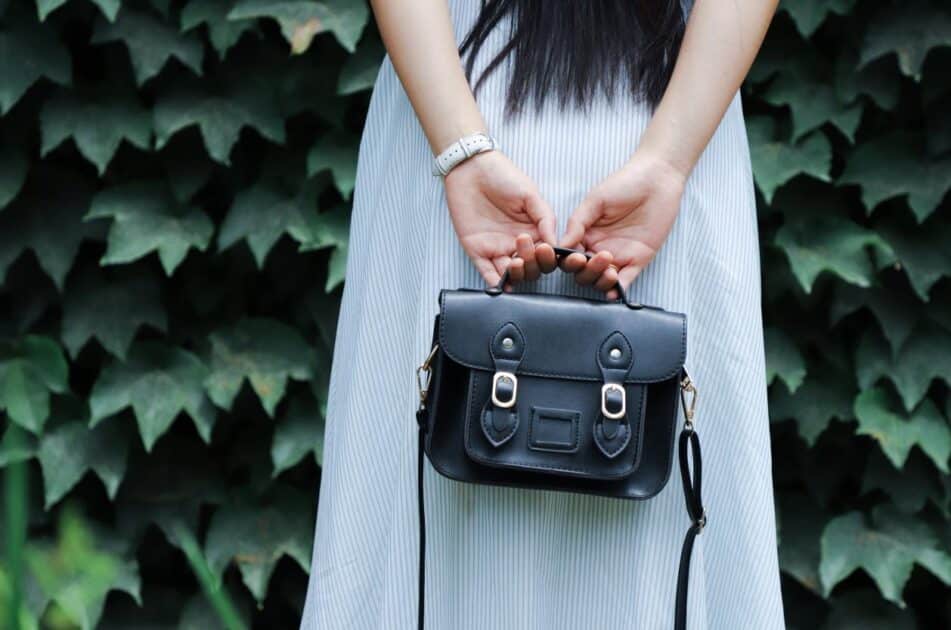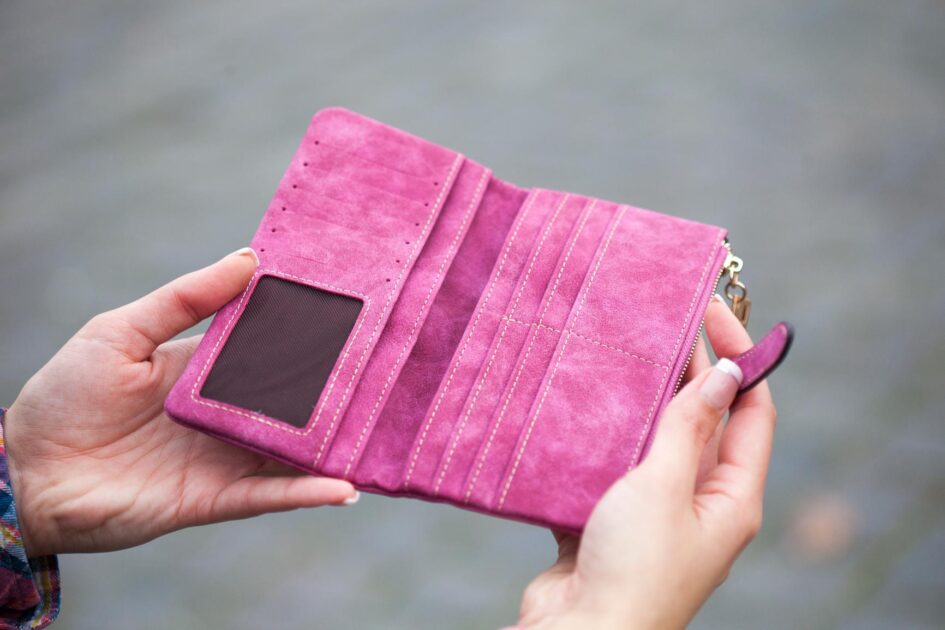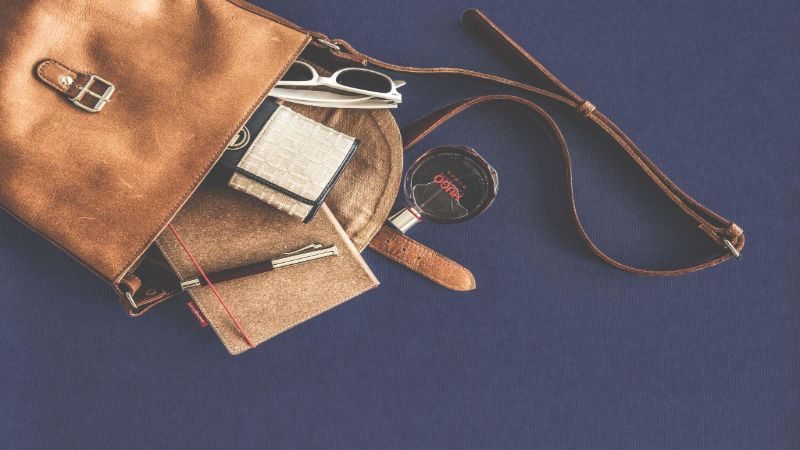Ever glanced at a designer handbag and wondered about the price tag? It’s not just the name you’re paying for; there’s a whole world behind that sleek leather and shiny hardware. Let’s dive into what really goes into making one of these luxury items.

You might think it’s all about high-end materials and brand prestige, but there’s more to the story. From the meticulous craftsmanship to the marketing magic, we’ll unravel the true cost of creating a designer handbag.
And don’t worry, you won’t need to break the bank to satisfy your curiosity. Sit back as we explore the fascinating journey from sketch to store shelf and discover the real value stitched into every seam.
Exploring the World of Designer Handbags
When you delve into the designer handbag industry, you often find yourself amidst a blend of art and utility. Crafting a designer handbag is incredibly labor-intensive, a process often shrouded in secrecy to maintain exclusivity. Every step, from conceptual design to the final stitch, reflects dedicated artistry and meticulous attention to detail.
Materials play a critical role in the process. High-quality leathers, exotic skins, and custom hardware are the norm. Prices for these materials vary widely but invariably contribute significantly to the overall cost. For example, high-end Italian leather can cost several times more than standard leather due to its finer quality and reputation for durability.
Beyond the tangible elements, you’re also investing in design innovation. Designers frequently go the extra mile to ensure that each piece stands out through unique silhouettes, patterns, and functionalities that often set trends in the fashion world. This innovation demands extensive research and development, contributing to the hefty price tag.
The production process involves skilled artisans, often with generations of experience. These experts hand-stitch, dye, and finish each bag. The time and labor associated with this process are substantial. Considering that it can take over 20 hours to produce a single handbag, labor costs quickly add up.
Marketing and branding further inflate the cost. Designer handbags are luxury items, and their advertisements reflect this status. High-profile campaigns featuring celebrities or renowned fashion icons create desire and demand which translates into an additional cost built into the price of the bag.
| Product Component | Contributing Factors |
|---|---|
| Materials | Quality leather, exotic skins, custom hardware |
| Design Innovation | Research and development, unique features |
| Craftsmanship | Artisan skill, hours of labor |
| Marketing and Branding | High-profile advertising, brand prestige |
Remember, when you purchase a designer handbag, you’re not just buying a product. You’re selecting a piece of fashion history, a statement of craftsmanship, and a symbol of status, which often appreciates in value over time.
The Price Tag: What Influences Cost?
When you’re eyeing that sleek, luxurious designer handbag, you’re not just looking at a bag; you’re looking at a meticulously crafted masterpiece. But ever wonder what drives its price sky-high? Material quality, brand legacy, and production intricacies play significant roles.
Fine leather, exotic skins, and high-end metals don’t come cheap, and the best materials can command top dollar. Remember, the caliber of materials often dictates the lifespan and appearance of your handbag, contributing to both its cost and value retention.
But it’s not just what it’s made of; it’s also about who made it. Brands with long-standing histories of luxury and exclusivity have the social clout to price their handbags at a premium. They’re selling more than a carryall; they’re offering entry into an elite club.
Another cost driver is the labor of love behind each bag. Artisans pour hours, sometimes days, into crafting a single handbag. And with intricate designs demanding highly skilled labor, wages are just as premium as the bags themselves. Here’s a snapshot of the average hours spent creating high-end designer handbags:
| Designer | Average Hours Per Bag |
|---|---|
| Hermès | 24-48 |
| Chanel | 15+ |
| Louis Vuitton | 8-24 |
These skilled artisans are often located in countries with stringent labor laws, ensuring fair wages which, in turn, inflates the cost.
What about rarity and demand? Limited edition lines create urgency, spawning waitlists that can stretch for months. The rarer the bag, the higher the demand, and consequently, the price swells.
Also included in the price tag is the extensive marketing designer brands engage in. High-profile advertising campaigns, celebrity endorsements, and prime retail locations—they all add to the allure and, yes, the bottom line.
When you buy that coveted designer bag, understand that you’re not just purchasing a product; you’re investing in a mini-ecosystem of luxury, labor, and legacy.
The Making of a Designer Handbag
When delving into the intricacies of crafting a designer handbag, you uncover a complex process where precision meets artistry. Materials selection stands at the forefront; luxury brands painstakingly source premium leathers, exotic skins, and high-quality hardware. These materials are not just durable, they’re symphonies of texture and color, designed to evoke a sensory response.
- Leather conditioning
- Skins treatment
- Metal polishing
Each step is geared towards longevity and aesthetics.
« How to Fix Peeling Handbag: Ultimate Guide for a Durable Fix
Can I Take a Handbag with My Hand Luggage? Airline Baggage Tips Revealed »
Patterns are the blueprint of any handbag. Artisans with years of experience draft these with unmatched precision. Cutting and stitching entail not only skill but a deep understanding of the materials to minimize waste and maintain durability. The stitch work on a designer handbag isn’t just functional—it’s a feature, often done by hand to ensure perfection.
The assembly reflects a marriage of technology and tradition. Components like linings, zippers, clasps, and pockets are put together seamlessly. Here’s the kicker—assembly isn’t rushed. Time is a luxury in itself.
- Stitch by stitch assembly
- Rigorous inspection
- Fine detailing
Craftsmen also imbue each piece with finesse, adding those unique touches that distinguish a brand.
Your handbag undergoes multiple quality checks. Bags that don’t meet standards don’t see the showroom floor. It’s a testament to the dedication behind the scenes.
Beyond the tangible elements, there’s an intangible allure in a designer bag’s making—the narrative. Each stitch carries history, every fold merges past and future. Investing in a designer bag is indulging in a culture where every detail matters and every element tells a story.
Remember, from design to production, it’s not just fabric and thread, it’s fashion’s pledge to deliver nothing short of a masterpiece.
Materials: The Foundations of Luxury
When you’re eyeing that stunning designer handbag, it’s not just the label you’re paying for. The cost of materials is a key driver behind the price tag. Luxury brands source premium raw materials that are often scarce and expensive. They’re not just looking for leather; they want the best leather. Think full-grain, top-tier hides which are not only durable but also age beautifully.
Craftsmen prefer exotic skins like crocodile, ostrich, and python for their unique textures and patterns. No two skins are identical, which adds to the exclusivity. But these materials are more than just pretty—they’re about lasting quality. And that’s what you’re investing in. Here’s a rundown of what goes into these materials:
- Full-Grain Leather: Sourced from the top layer of the hide, it retains all the natural markings.
- Exotic Skins: Under strict regulations, these add a layer of uniqueness but come with a higher cost.
- Hardware: Often plated with precious metals, the clamps, zips, and locks need to withstand time.
The tanning process itself is an art. It transforms raw hides into soft, colored leathers that form the handbag’s skin. This isn’t a quick dip-and-dry; it can take up to six months for certain leathers. The result is a material that’s both plush and robust.
Then there’s the fabric lining that lies inside. Silk, suede, and high-thread-count cottons add a touch of elegance that seems just as crafted as the exterior. These are materials that make your handbag more than an accessory—they make it a statement piece.
Metals are not an afterthought. Often, designers opt for gold, silver, or palladium for their lustrous finish and anti-corrosive properties. They’re meticulously shaped, polished, and sometimes even hand-engraved.
Quality materials are the foundation upon which luxury handbags are built. They ensure durability, functionality, and an aesthetic that’s hard to replicate. The cost is not just in the material itself, but in the effort and expertise to select and prepare it for its final form.
Craftsmanship: The Art of Creating Perfection
Designer handbags aren’t just accessories; they’re a testament to skilled artisanship. Craftsmanship lies at the heart of what turns an ordinary bag into a coveted masterpiece.
Imagine the scene in a prestigious atelier: artisans with decades of experience stitch and shape the fine materials you’ve just learned about. These master craftsmen pour their expertise into every detail, following time-honored techniques that machines can’t replicate. They’re not just making a bag; they’re crafting a legacy.
Precision is non-negotiable. Stitches must be uniform, and margins exact. A single bag can take upwards of 20 hours to create, beginning as a designer’s sketch and ending in a display case. Yet the rigorous quality checks throughout this journey ensure that any bag that doesn’t meet the highest standards will never see the light of day.
Consider the signature elements of each brand – think of Dior’s Cannage stitch or Chanel’s quilted leather. These aren’t mere design choices; they require artisans to have specialized skills that take years to refine.
With each collection, new challenges arise. Artisans must adapt to incorporate modern designs while maintaining the brand’s heritage—striving to balance innovation with tradition. For instance, when a designer decides on a unique closure mechanism or an unconventional bag shape, it’s the craftsman’s job to bring this vision to life without compromising on the brand’s hallmark quality.
Let’s talk numbers. Here’s what you might not see reflected in the price tag:
| Man Hours | Complexity | Cost Impact |
|---|---|---|
| 20-50 hours | High | Significant |
| 5-15 hours | Medium | Moderate |
| <5 hours | Low | Limited |
Handbag production costs are greatly influenced by the required craftsmanship level. The more intricate the design and rigorous the assembly, the higher the production costs.
Artisan wages reflect their irreplaceable role in the creation process. Paying for a designer handbag means you’re investing in years of tradition and the livelihood of these skilled creators. It’s not just the tangible materials you’re paying for—it’s their unmatched dexterity and painstaking attention to detail.
Branding and Marketing: The Power of Perception
In the world of high fashion, branding is your handbag’s narrative, transforming a stylish accessory into an iconic statement. Designer labels spend fortunes on creating an image that resonates with luxury, exclusivity, and prestige. Your desire for that prestigious name isn’t just about the bag—it’s about the story, the status it confers, and the emotional connection it evokes.
Marketing strategies in fashion are sophisticated and omnipresent. They’re the silent salesperson whispering in your ear from every glossy magazine page, Instagram post, and glitzy storefront. These campaigns are specifically designed to create demand and justify the steep price tags. It’s not just the physical product; you’re buying the lifestyle that it symbolizes. The cost of these extensive marketing efforts is inevitably factored into the price of each designer handbag.
The power of perception plays a pivotal role in pricing. A Hermès Birkin isn’t merely a handbag; it’s a symbol of unparalleled craftsmanship and a representation of a high-end lifestyle. Whether on the arm of a celebrity or in a well-guarded display case, the perceived value is dramatically increased by the brand’s controlled scarcity and publicized exclusivity.
Consider the effects of limited editions and collaborations. When a designer partners with a renowned artist or releases a one-off collection, the rarity and unique appeal of these handbags soar. Prices escalate not because of the cost of materials or craftsmanship, but due to the buzz these initiatives generate.
Ultimately, the designer handbag you choose is as much about the brand’s image and marketing prowess as it is about quality and design. When you select that coveted bag, you’re not just carrying leather and hardware; you’re shouldering a piece of a much larger narrative—one that has been meticulously crafted to capture your imagination and open your wallet.
From Sketch to Store Shelf: The Journey of a Designer Handbag
You might think a designer handbag’s journey starts on the drawing board, but it begins long before. Conceptualization is key, where a designer’s inspiration becomes a potential product. The design phase includes drafting, revising, and creating a prototype, which could take months.
Material selection is more than picking leather or fabric. It’s about choosing the right quality that’ll reflect the bag’s value. Ever wonder what goes into that cost? Materials can be sourced globally, each chosen for its resilience, texture, or sheen. Securing premium leather, hardware, and lining are crucial and drive up the production costs.
Making a handbag is an art. In the production stage, skilled artisans hand-stitch, dye, and assemble bags. This labor-intensive process ensures every detail is perfect, boosting both the cost and value. It’s not uncommon for a single bag to take upwards of 20 hours to complete.
Once assembled, each bag undergoes rigorous quality control. Every stitch, clasp, and seam is inspected. Quality can’t be compromised, and designer brands know this. Reject rates are high, ensuring only the best products make it to the store shelves.
Then comes marketing and distribution. These bags aren’t just placed anywhere – they’re strategically debuted in high-end boutiques or exclusive online stores. Add the cost of high-profile ad campaigns, fashion shows, and celebrity endorsements, and you’ll begin to understand the markup. Remember, it’s not just the bag; it’s the brand experience you’re paying for.
Inventory is another unseen cost. Designer handbags aren’t typically mass-produced. To maintain exclusivity, limited runs are the norm, meaning higher storage costs and less scale economy.
Finally, the retail experience is sculpted to be as luxurious as the product. From packaging to presentation, every element is an extension of the brand’s image. Stepping into a designer boutique is part of the allure, an immersive experience that commands a premium.
The Real Value: Understanding the Price of Luxury
When you delve into the world of luxury handbags, you quickly realize the price isn’t just about the object—it’s about the experience. Designer handbags are more than just bags; they’re a statement. They tell a story of status, quality, and aesthetic appeal that draws you in.
The cost to produce a designer handbag can be dissected into several core components. Materials such as premium leather or exotic skins are top-tier, and the prices reflect their scarcity and quality. Craftsmanship, too, constitutes a significant chunk of the expenditure. Artisan skill is rare and the meticulous attention to detail commands high labor costs.
Branding can skyrocket the value of a handbag. Luxury brands spend fortunes on advertising to build a reputation that’s synonymous with prestige and glamor. Every ad, every runway show, and every celebrity endorsement adds to the handbag’s perceived value. This isn’t just a purchase; it’s an investment in a brand’s legacy.
Consider exclusivity. Limited runs create a sense of urgency, a fear of missing out, which can inflate prices dramatically. When you buy a handbag from a limited series, you’re buying a piece of history, something that not many others can claim to own.
Lastly, retail experience plays a crucial role. Walking into a designer brand’s store isn’t like entering a regular shop; it’s an immersive experience. From the opulent ambiance to the personal service, every aspect is designed to make you feel special.
While it’s not always clear what percentage of the price tag is pure profit versus covering expenses, it is evident that the allure of luxury handbags transcends traditional supply and demand metrics. You’re not just paying for a product; you’re paying for the craftsmanship, the brand, and the exclusive right to carry a piece of high fashion that few can own.
Conclusion
You’ve seen the myriad factors that go into the pricing of designer handbags. It’s clear that you’re not just buying a bag; you’re investing in a piece of artistry and a slice of luxury lifestyle. The premium you pay isn’t merely for the object itself but for the exclusivity, the brand heritage, and the statement it makes about your personal style. Remember, when you’re carrying a designer handbag, you’re holding more than just your essentials—you’re clutching a story, an experience, and a symbol of fashion at its finest.
Frequently Asked Questions
Why are designer handbags so expensive?
Designer handbags are expensive due to the quality of materials, meticulous craftsmanship, powerful branding, and strategic marketing. These elements create a perception of luxury and exclusivity which, in turn, allows for premium pricing.
What factors contribute to the high cost of designer handbags?
The cost is influenced by several factors such as the quality of materials used, artisan craftsmanship, brand reputation, limited edition releases, and the retail experience which together enhance the bag’s rarity and allure.
How does perception affect the pricing of luxury handbags?
Perception is crucial in luxury pricing. Luxury brands invest heavily in crafting an image of exclusivity and prestige, which leads consumers to value the products higher solely based on the perceived brand image.
What role do limited editions play in the appeal of designer handbags?
Limited editions increase a handbag’s appeal by creating a sense of rarity and urgency among consumers, leading to increased demand and the ability for brands to charge higher prices.
Are consumers just paying for the brand when they buy a luxury handbag?
Not entirely; consumers are paying for the quality, craftsmanship, branding, and the exclusive privilege to own a high fashion accessory. The brand is a significant factor, but it encompasses several elements that contribute to the overall value of the handbag.










